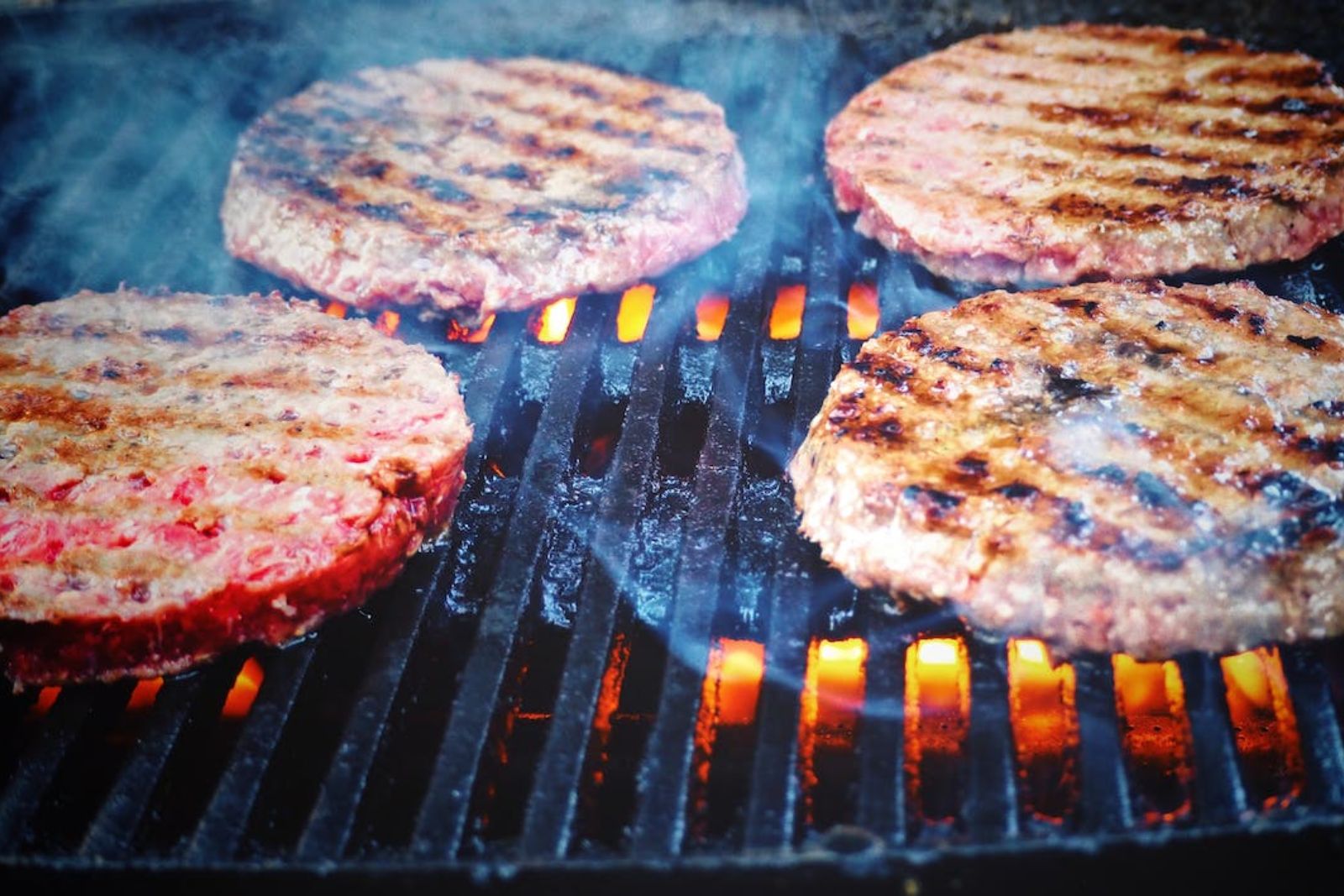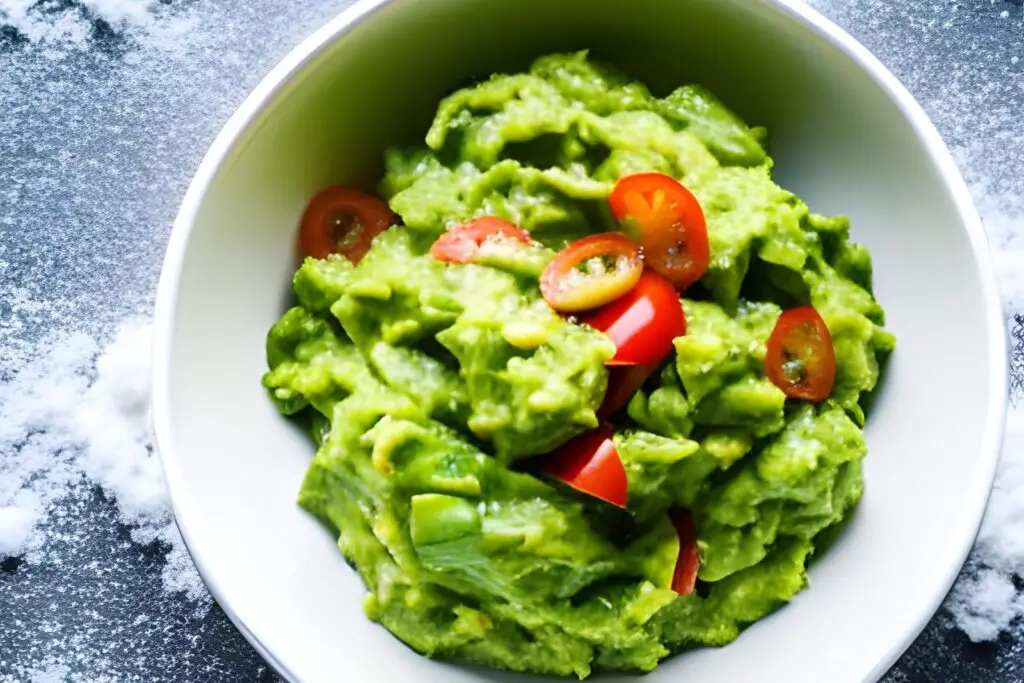
Beef patties are a staple in many households, offering a tasty and convenient option for quick meals. Whether you’re preparing a batch of homemade patties or purchasing them pre-made, freezing beef patties can be a game-changer in terms of convenience and meal planning. By learning the proper techniques and steps to freeze beef patties, you can ensure that you always have a supply of delicious patties on hand, ready to be cooked up whenever you’re in the mood for a satisfying burger or a flavorful addition to your favorite recipes.
Here are the simple steps to freeze beef patties:
Step 1: Select the Perfect Patties
Choosing the right beef patties is crucial when it comes to freezing them. Here’s a breakdown of why it’s important and how to go about it:
- High-Quality Patties: Opt for freshly ground beef that is of high quality. Freshly ground beef tends to have better flavor and texture compared to pre-packaged patties. Look for meat that is bright red, indicating freshness.
- Lean to Fat Ratio: Aim for an 80% lean to 20% fat ratio when selecting your beef patties. This balance of lean meat and fat content ensures a juicy and flavorful burger. The fat helps to keep the patty moist during cooking, while the lean meat provides a meaty flavor.
- Homemade Patties: Alternatively, you can shape your own patties using ground beef of your choice. This allows you to have complete control over the quality and size of the patties. Ensure that the ground beef you use is fresh and of good quality.
- Uniform Size and Shape: Whether you’re using pre-packaged patties or shaping your own, it’s important to make sure they are uniform in size and shape. This ensures even freezing and cooking. Patties of different sizes may freeze and thaw at different rates, resulting in uneven cooking or texture.
By selecting high-quality patties with the right lean-to-fat ratio and ensuring uniformity in size and shape, you set the foundation for delicious and evenly cooked burgers when you eventually thaw and cook them. Remember, the better the quality of the patties you start with, the better the outcome will be when you’re ready to enjoy your frozen beef patties.
Step 2: Prep the Patties
Properly preparing the patties before freezing is essential to maintain their quality and prevent them from sticking together. Let’s delve into the details:
- Wax Paper or Parchment Paper: Place a small piece of wax paper or parchment paper between each patty. This serves as a barrier and prevents the patties from sticking together during the freezing process. It also makes it easier to separate individual patties when you’re ready to cook them.
- Pre-Packaged Patties: If you’re using pre-packaged patties, simply place a piece of wax paper or parchment paper between each patty in the packaging. This prevents them from freezing together into a solid block.
- Homemade Patties: If you’ve shaped your own patties, you have a couple of options. You can stack the patties with wax paper in between each layer. Ensure that the wax paper completely separates the patties. Alternatively, you can use a plastic divider specifically designed for freezing patties. This helps maintain the shape and integrity of each patty while preventing them from sticking together.
By separating the patties with wax paper or parchment paper, you prevent them from freezing together into a clump. This step is crucial for easy portioning and prevents damage to the patties when you’re ready to cook them individually. Properly prepping the patties ensures that you can enjoy your burgers hassle-free when you thaw and cook them later.
Step 3: Wrap for Protection
Properly wrapping your beef patties is crucial to protect them from freezer burn, maintain their flavor, and preserve their texture. Here’s a breakdown of why this step is important and how to go about it:
- Individually Wrap with Plastic Wrap: Start by individually wrapping each patty with plastic wrap. Ensure that the entire patty is covered, and there are no exposed areas. This creates a protective barrier that prevents moisture loss and helps guard against freezer odors. Wrapping each patty separately also makes it easier to take out and thaw only the desired number of patties when you’re ready to cook.
- Eliminate Air Pockets: When wrapping the patties, make sure there are no air pockets trapped inside the plastic wrap. Air pockets can lead to freezer burn, which can affect the quality and taste of the patties. Press the plastic wrap tightly against the surface of each patty to create a snug fit.
- Resealable Freezer Bag: For an extra layer of protection, place the individually wrapped patties in a resealable freezer bag. Squeeze out as much air as possible from the bag before sealing it. Removing excess air helps prevent freezer burn and maintains the quality of the patties during storage.
By individually wrapping the patties with plastic wrap and placing them in a resealable freezer bag, you create multiple layers of protection against freezer burn and freezer odors. This ensures that the patties retain their flavor and texture until you’re ready to use them. Properly wrapped beef patties will stay fresh and maintain their quality for an extended period in the freezer.
Can I freeze beef patties directly from the grocery store packaging?
It is generally not recommended to freeze beef patties directly in their grocery store packaging. The packaging used in stores may not provide adequate protection against freezer burn or maintain the quality of the patties over an extended period. It is best to transfer the patties to airtight freezer-safe containers or wrap them securely with plastic wrap or freezer bags before freezing to ensure optimal preservation.
Step 4: Label and Date
Labeling and dating the packaging of your frozen beef patties is an important step to help you keep track of their storage time and ensure you use them in a timely manner. Here’s why it’s crucial and how to do it effectively:
- Tracking Storage Time: By labeling and dating the packaging, you can easily keep track of how long the beef patties have been in the freezer. This is important because frozen food can lose quality over time, and using the oldest patties first ensures freshness and optimal taste.
- Using a Permanent Marker: Use a permanent marker to write the current date on the plastic wrap or freezer bag. A permanent marker is ideal because it won’t smudge or fade over time, ensuring the information remains legible.
- Brief Description: Along with the date, it’s helpful to include a brief description on the packaging. This can be as simple as “beef patties” or any other relevant information that helps you identify the contents easily.
- Placing the Label: Write the date and description on a visible area of the plastic wrap or freezer bag, ensuring it won’t be covered or obscured. This makes it easy to locate and read the label without having to move or rearrange the frozen patties.
By labeling and dating the packaging of your frozen beef patties, you can maintain an organized freezer and easily identify the patties you need to use first. This practice ensures that you consume the oldest patties before their quality starts to decline, guaranteeing the best taste and freshness for your meals.
Step 5: Place in the Freeze
Properly freezing your wrapped beef patties is essential to maintain their quality and ensure even freezing. Here’s a breakdown of why this step is important and how to do it effectively:
- Choose a Flat Surface: Select a flat surface in your freezer, such as a shelf or tray, where you can place the wrapped beef patties. This allows for stability and prevents the patties from shifting or getting damaged during freezing.
- Arrange in a Single Layer: Place the wrapped beef patties in a single layer on the chosen flat surface. This ensures that each patty has enough space for proper air circulation and freezing. Avoid stacking or overcrowding the patties, as it may lead to uneven freezing and affect the texture and quality of the patties.
- Provide Adequate Space: Leave enough space between each patty to facilitate proper air circulation. Sufficient space allows for even freezing and helps maintain the texture and taste of the patties. If needed, you can use multiple flat surfaces or trays to accommodate all the patties while still providing enough space.
- Gently Close the Freezer Door: After placing the patties in the freezer, close the freezer door gently. Be mindful of minimizing temperature fluctuations, as rapid changes in temperature can affect the quality of the patties. Avoid opening the freezer door frequently to maintain a consistent freezing environment.
By arranging the wrapped beef patties in a single layer, providing enough space for air circulation, and closing the freezer door gently, you ensure that the patties freeze evenly and maintain their texture and flavor. Following these steps helps preserve the quality of the patties and ensures that they’re ready for cooking whenever you need them.
How long can beef patties last in the freezer?
Beef patties can last in the freezer for approximately 3 to 4 months whilemaintaining good quality. However, for optimal flavor and texture, it is recommended to consume them within 1 to 2 months. Proper packaging and storage conditions, such as using airtight wrapping and maintaining a consistent freezer temperature of 0°F (-18°C) or below, contribute to extending their freezer shelf life.
Step 6: Thaw the Frozen Patties
Thawing and cooking frozen beef patties correctly is essential to ensure they are safe to eat and retain their quality. Here’s a breakdown of the thawing and cooking process:
- Thawing in the Refrigerator: The recommended method for thawing frozen beef patties is to place them in the refrigerator overnight. This slow thawing process allows the patties to thaw gradually, preserving their texture and taste. Ensure that the patties are still wrapped or in sealed packaging to prevent cross-contamination with other foods in the refrigerator.
- Microwave Thawing: If you’re short on time, you can use the defrost setting on your microwave to thaw the patties. However, be cautious as this method can slightly affect the texture of the patties. Follow the microwave manufacturer’s instructions for defrosting meat and be sure to monitor the patties closely to prevent any parts from cooking prematurely.
- Cooking the Thawed Patties: Once the patties are thawed, you can cook them using your preferred method. Whether it’s grilling, using a stovetop, or cooking in the oven, follow your usual cooking process for beef patties. Ensure that the patties reach a safe internal temperature of 160°F (71°C) to ensure they are fully cooked and safe to eat.
By thawing the frozen beef patties in the refrigerator overnight, you allow them to thaw slowly, preserving their texture and taste. If you opt for microwave thawing, keep a close eye on the patties to prevent any uneven cooking. Finally, cook the thawed patties using your preferred method, ensuring they reach the appropriate internal temperature for safe consumption. Following these steps will result in delicious, fully-cooked beef patties ready to be enjoyed.
Other related questions
Can you refreeze beef patties?
It is generally safe to refreeze beef patties if they were thawed properly in the refrigerator. However, the quality may deteriorate with each freeze-thaw cycle. To maintain the best flavor and texture, it is advisable to cook the thawed patties before refreezing them to minimize potential loss of quality.
How do I know if the beef patties have gone bad after being frozen?
To determine if frozen beef patties have gone bad, examine their appearance, smell, and texture. If the patties have developed freezer burn, characterized by dry, discolored, or leathery patches, it indicates potential deterioration. A foul or off-putting odor, or slimy and mushy texture, are also signs of spoilage. When in doubt, it is best to discard the patties to avoid consuming spoiled meat.
Is it safe to freeze cooked beef patties?
Yes, it is generally safe to freeze cooked beef patties. Freezing helps to preserve the cooked meat, extending its shelf life. Ensure the cooked patties have cooled down completely before wrapping and freezing them to prevent bacterial growth. Proper packaging and storage conditions, such as using airtight containers or wrapping, will help maintain the quality of the cooked beef patties in the freezer.
Can I freeze seasoned beef patties?
Yes, you can freeze seasoned beef patties. Seasoning the beef patties before freezing can add flavor to the patties. Freezing seasoned beef patties allows for easy meal preparation in the future, as they can be cooked directly from the frozen state. Just be sure to follow proper cooking guidelines to ensure they are cooked thoroughly and reach a safe internal temperature.








